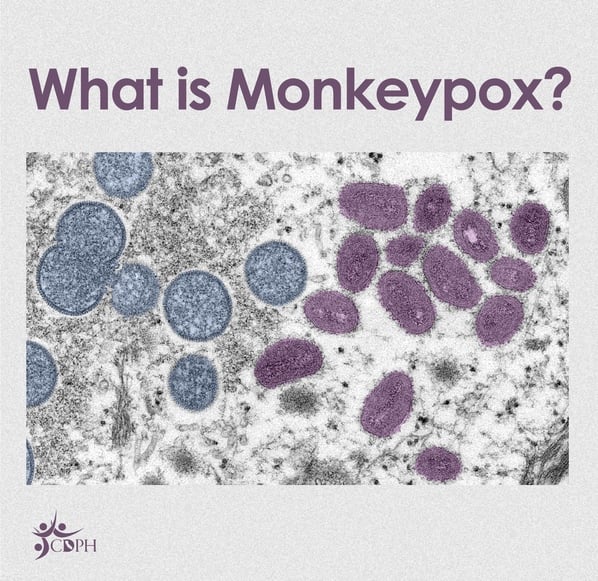
Gay and bisexual men and transgender individuals taking PrEP are eligible for the monkeypox vaccine today in Long Beach and Los Angeles County, health officials said.
Monkeypox vaccine eligibility also was expanded to include gay and bisexual men and transgender persons in two additional categories:
Attended saunas, bathhouses, sex clubs, circuit parties, or sex parties where they had anonymous sex or sex with multiple partners in the past 21 days.
Diagnosed with gonorrhea or early syphilis within the past 12 months.
The monkeypox vaccine requirements have been expanded for gay and bisexual men and trans people because, so far, the majority of monkeypox cases throughout the United State have been diagnosed in these groups, health officials have said.
The monkeypox vaccine isn’t available yet to everyone who wants one because supplies still are limited.
Starting today in Long Beach, a pre-registration system is available for individuals to join a waiting list.
People who sign-up and meet the new eligibility criteria will be contacted with additional information on how to get vaccinated.
The vaccine available to prevent monkeypox, JYNNEOS, is a two-dose series given four weeks apart. Second dose reminder cards will be given after vaccination.
In Los Angeles County, residents who meet the eligibility requirements can get vaccinated several ways:
- Contact their doctor to find out if they are a monkeypox vaccine provider. If they are, eligible residents can schedule an appointment.
- Providers who are registered to administer the vaccine also may reach out to patients who are thought to be eligible and invite them to get the shot.
- Visit a public monkeypox vaccine location with their ID and one of the following:
- Proof of gonorrhea or early syphilis infection in the past 12 months in the form of a lab report (the proof can be shown from your phone, including a screenshot of the result or within a patient portal
- A monkeypox provider attestation form completed by your doctor
- Get contacted by text message from the health department
What is monkeypox?
Monkeypox is a viral infection from a pox virus that was first discovered in monkeys in 1958. It is believed that the virus naturally lives and reproduces in rodents in central and western Africa. The first human case of monkeypox was identified in the Democratic Republic of Congo in 1970. The last major outbreak in the United States was in 2003 from Gambian giant rats imported by an exotic pet dealer.
“There have been sporadic exposures to cases over the years,” said Dr. Erica Pan, state epidemiologist with the California Health Department. “This year is the first time there have been so many cases in countries that don’t normally have monkeypox.”
Monkeypox infections in the U.S. are usually associated with travel to west or central Africa or contact with imported infected animals.
How is monkeypox transmitted?
“In this current outbreak, the highest risk of transmission is very close, skin-to-skin contact, including kissing and sex, with the lesions someone has on their skin,” Pan said. “But monkey pox is not a sexually transmitted disease.”
“There is some potential risk with prolonged, intimate face-to-face contact with someone. But monkeypox is very different from COVID, which is a respiratory disease and highly infectious,” Pan said
“We have seen rare cases where the virus can be transmitted if someone shares clothing, and someone with lesions was wearing that clothing,” she said.
What are the symptoms of monkeypox?
“The symptoms are flu-like, including fever, muscle aches, swollen lymph nodes,” Pan said. “Sometimes swollen lymphs nodes in our neck happen before the rash or lesions appear. The rash can be painful.
“These rashes can be infectious for a very long time. The lesions heal, but they can take days to weeks. They will scab over and heal,” she said.
How long after exposure does someone develop monkeypox symptoms?
“People can develop symptoms anywhere from five days to three weeks after exposure,” Pan said.
What does monkeypox look like?
“They look like blisters, but they can look like chickenpox, syphilis, or herpes, and there are different stages of these blisters,” Pan said.
Where does it appear on the body?
“It can appear almost anywhere, but what’s been noted in many of the recent cases is that it appeared in the genital and anal area,” Pan said. “One thing that makes it different from other rashes is that it can appear on the palms, soles of your feet, the chest, the face. Monkeypox could appear on one part of the body or all over the body,” Pan said.
Cases in gay, bisexual men
Some of the initial cases in Europe were traced to a circuit party on the Canary Islands and a leather event in Belgium that were attended by gay and bisexual men.
“It’s not that queer people are any more likely to get monkeypox. Nothing about monkeypox makes it a uniquely queer disease. Anybody can get monkeypox,” said Dr. James Simmons, a hospitalist nurse practitioner in Los Angeles.
“It’s purely coincidental that the spread started at queer events in Europe,” Simmons said. “Queer people historically travel within queer communities and attend queer events. So because this outbreak likely, and coincidentally, started at queer events, it’s important we make sure the LGBTQ+ community is educated regarding their potential risk.”
Prevention efforts
“Talk with your sexual partner about any recent illnesses,” Pan said. “Be aware of any new sores or rashes on your body or your partner’s body, including the genital and anal area. Avoid close or sexual contact with someone who does have sores or rashes.
“If someone does have a case, it’s important to cover the rash and avoid contact with people.”
